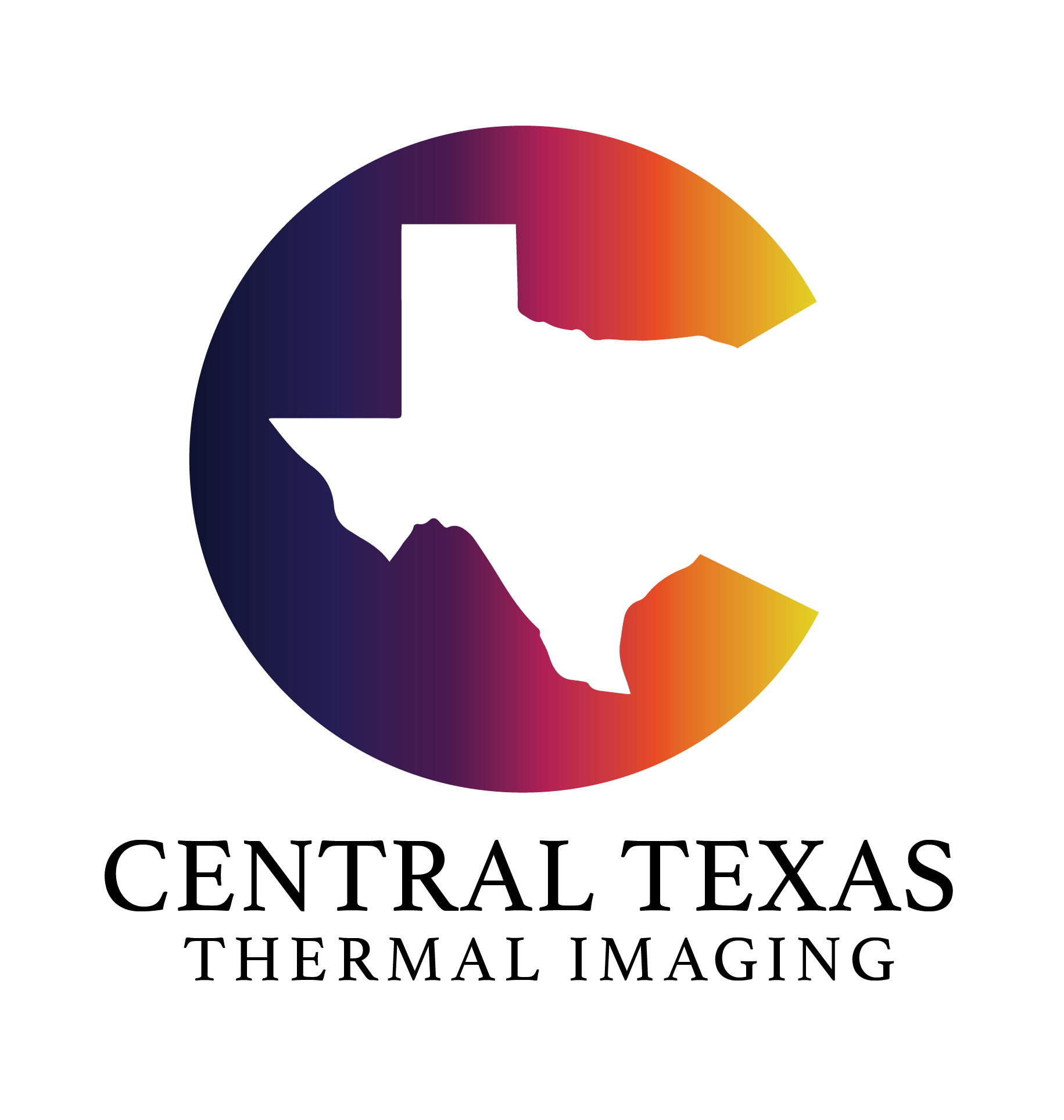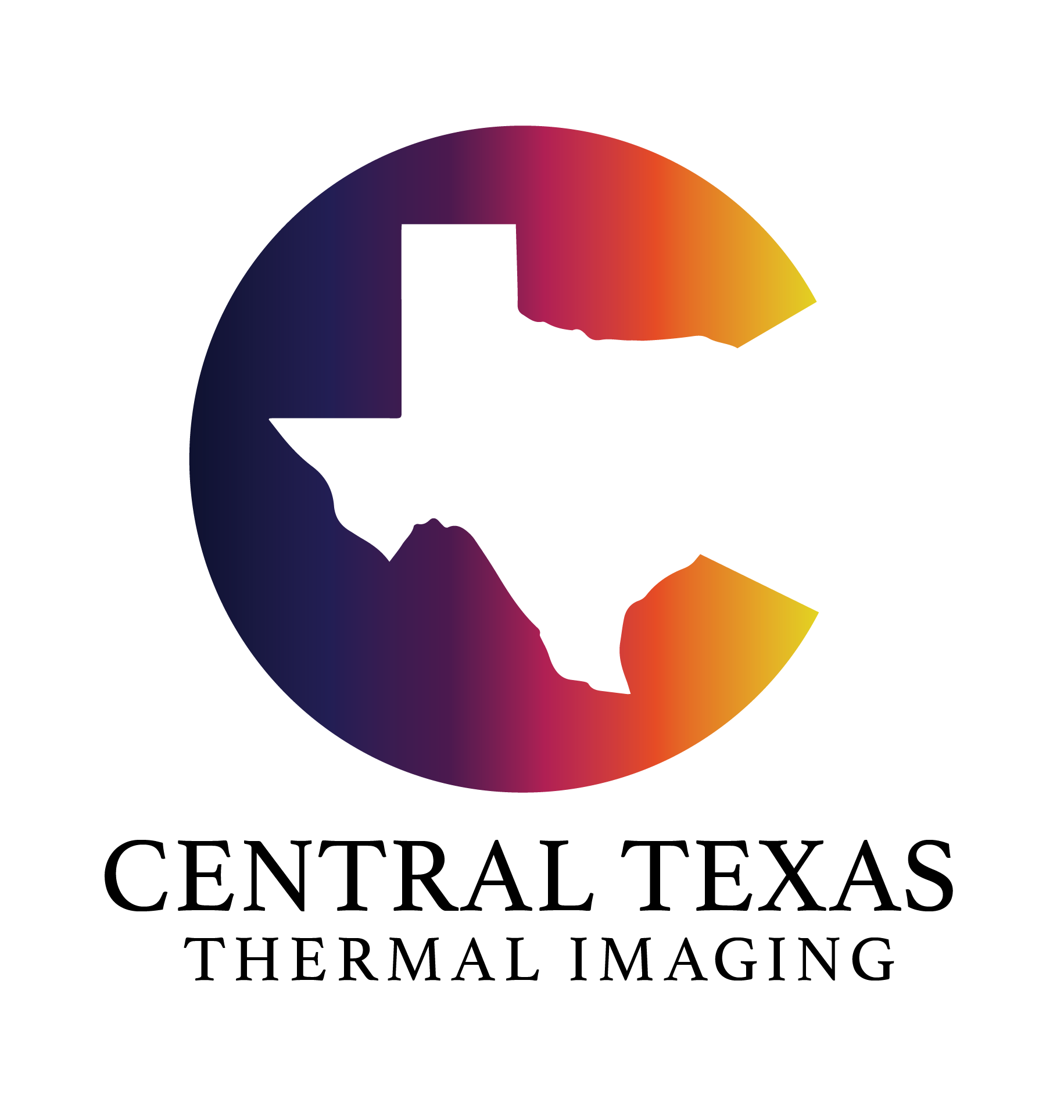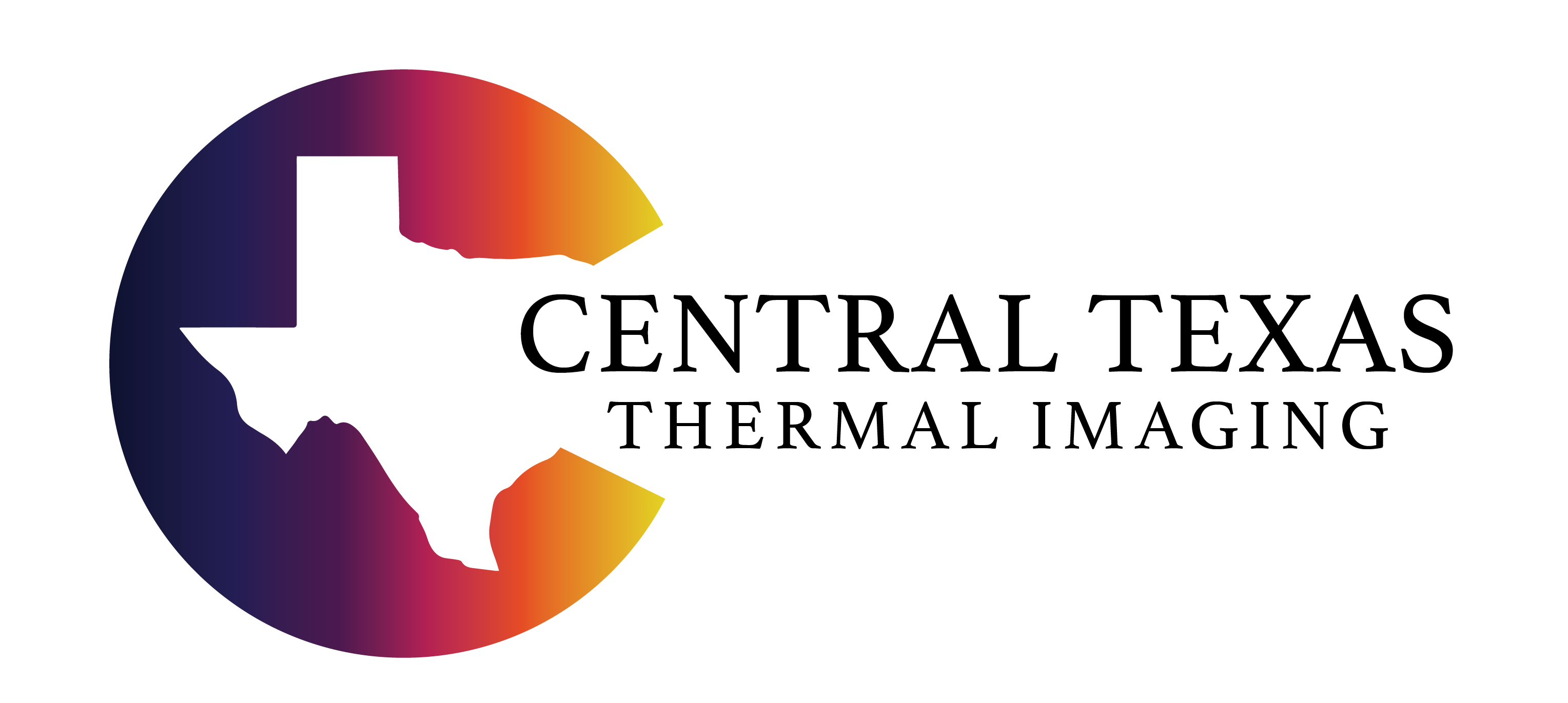Follow Us x
How do thermal imaging cameras work?
In the 1800’s Sir William Hershel was studying how light passes through a prism when he noticed that the different colored lights passing through the prism had different temperatures. He also measured the light past the red spectrum, where no light was visible, and noticed that this area had the highest temperature. This area became known as “infrared” meaning beyond red.
An infrared camera can detect this energy. The camera detects radiated energy emitted from the object. All objects that have a temperature above O degrees Kelvin (absolute O) radiate energy.
The cameras, that Central Texas Thermal Imaging use, detect energy in the “long wave” spectrum between 8 and 14 µm.

Electromagnetic Spectrum
How does an Infrared Camera detect moisture in low-sloped roofs.
Low-sloped roofs, usually found on commercial building, consist of a structural decking, layer of insulation and a waterproof membrane on top. If the membrane becomes damaged water can enter and migrate through to the insulation layer and become trapped. The thermal capacitance of the wet insulation is much higher than that of the dry insulation. During a warm sunny day the wet and dry insulation heat up, at night the dry insulation releases the heat much faster than the wet insulation. The roof can be inspected at night as it is releasing heat. The “wet” areas will appear hot to the infrared camera and are verified with Tramex moisture meters. These areas can be easily marked and documented. The building owner can now replace only the areas of wet insulation, saving time and money.


Marked area of roof showing moisture damaged insulation
What types of roofs can be surveyed using Infrared Cameras?
- Asphalt Built-up
- Coal Tar Built-up
- Slag Embedded on Built-up Roof(BUR)
- EPDM Mechanically Attached with In-Seam Batten Bars
- Pea Gravel Embedded on Built-up Roof
- Granule Surfaced Modified Bitumen BUR
- Smooth Surfaced Modified Bitumen BUR
- Aged Thermoplastic Polyolefin (TPO)
What types of insulation are good candidates for Infrared Surveys?
- Fiberglass
- Wood Fiber
- Cane Fiberboard
- Perlite
- Some Polyisocyanurate
How does an Infrared Camera detect moisture intrusion in buildings?
Moisture intrusion in commercial and residential building is not only unsightly; it can be costly and if left unrepaired can cause health issues due to mold growth. Moisture (water) can enter the building envelope through bad flashing details around windows and doors, from storm damage or from plumbing leaks. When the moisture reaches the surface of the interior wall the evaporation makes the area appear cooler than the surrounding dry areas. An infrared camera can easily detect this and is verified with a moisture meter. Central Texas Thermal Imaging uses spray racks and wands to help identify to areas where moisture is entering the building envelope.

Moisture entering interior walls and ceiling due to poor window flashing.

Moisture entering interior walls due to poor window flashing.
Can an Infrared Camera detect mold?
An infrared camera cannot detect mold but can detect moisture in which mold needs to grow. An air quality specialist certified in mold detection should be employed to determine if mold is present in the building. Central Texas Thermal Imaging works with professionals who can determine if, and what kind of, mold is present.
How does an Infrared Camera detect electrical issues?
Ohm’s Law that says as resistance increases at a given current the component temperature will rise and dissipate more power. This resistance can be caused by overloaded circuits and poor connections. If unchecked this can lead to equipment failure or worse yet fire. Infrared cameras can easily detect overload or poor connections which can be overlooked by the naked eye.

Overload phase in a three-phase system

Poor connection of the neutral conductor to bar
What electrical issues can be detected?
- Short circuits
- Loose connections
- Open circuits
- Bad breakers
- Faulty fuses
- Overloads
- Unbalanced loads
- Inductive currents
- Energized grounds
Are Infrared Surveys of Electrical Gear required?
The National Fire Protection Association (NFPA) 70B §11.17.5 suggests that every commercial and industrial building in the United States should have an IR survey at least once a year. Insurance companies are requiring IR surveys of electrical and mechanical systems for their insured. Many commercial companies are performing Infrared Surveys as part of their predictive maintenance program and a cost-saving measure for the company.


